Since the emergence of civilization, after discovering that fire can help us cook, kitchen utensils have also followed suit. From pottery jars and clay vessels to cast iron vessels and non stick pans, constantly evolving. As we pave the way for evolution, our need to maintain orderly and convenient kitchen spaces has become vivid. Next, we not only need to know what container to use for cooking, but also learn how to store essential items.
The core of every family is the kitchen, and the key to a well functioning kitchen lies in the quality of the kitchen utensils. Investing in high-quality and durable kitchenware is not just for convenience; Beneficial for enhancing your cooking experience, making cooking a pleasurable experience and a creative art form.
Whether you are an aspiring chef or a family chef, choosing the right kitchen utensils will significantly affect your cooking results and overall satisfaction.

In this guide, we will explore the basic techniques for choosing kitchenware that not only meets your needs but also stands the test of time.
1. Precautions for purchasing kitchenware
The kitchen utensil set not only affects the daily cooking experience of the family, but also has a significant impact on the overall dining experience when receiving guests. Because food quality is affected by products, we need to know how to invest in products that can maintain high performance for a long time. Therefore, when purchasing kitchenware sets, please remember the following five tips.
1.1 Stay within your price range
You must have a realistic attitude towards what you can afford. Although you don’t want to pay too high a price for anything, your kitchenware should be the best in your price range. In addition, pay attention to promotions and discount activities to obtain higher quality kitchenware without overspending. If you are willing, you can consider purchasing multifunctional kitchenware to avoid duplicate investment. Ultimately, living within your means and planning reasonably will help you obtain the high-quality kitchenware you need within your budget.
1.2 Understand the thermal conductivity coefficient
If you remember in science class, certain metals are better at capturing and retaining heat than others. Aluminum and copper are considered good conductors of heat, but stainless steel is also a great material for cooking because stainless steel cookware has uniform heat distribution and insulation, which allows food to be heated evenly, avoiding overheating or local undercooling, thereby improving cooking consistency and final dish quality. If you want to control the temperature stability during the cooking process, stainless steel cookware is a great choice.
1.3 Consider reactivity to different foods
If you cook, you should know that different metals react differently to certain foods. For example, it is well known that aluminum cookware may react with acidic foods such as tomatoes, which means your food will absorb metals, which is clearly not tasty or healthy. Stainless steel and titanium alloy are more stable and suitable for various food ingredients. Although copper pots have superior thermal conductivity, it is important to pay attention to their reaction with certain foods, so it is best to choose products with lining. Ceramic and cast iron cookware perform well in maintaining the original flavor of food, but the former is fragile and the latter is heavier. When choosing kitchen utensils, make sure that the materials are compatible with the foods you commonly use to ensure cooking effectiveness and food safety.
1.4 Develop a maintenance plan
One of the main advantages of stainless steel kitchenware is that it does not require heavy labor to maintain cleanliness. Copper and cast iron kitchenware also provide high-quality thermal conductivity and durability of stainless steel kitchenware, but their cleaning burden is much greater. Secondly, regularly check the wear and tear of kitchen utensils and repair or replace parts as needed. For example, non stick pans need to avoid using metal utensils to prevent damage to the coating. Regularly sharpen the cutting tools to maintain their sharpness. Developing a maintenance plan can not only extend the lifespan of kitchen utensils, but also maintain the quality of cooking.
1.5 Invest in durability
Although you can rely on stainless steel, copper, and aluminum to withstand toughness tests even in the busiest kitchens, aluminum is usually not as durable. Choose materials such as stainless steel, cast iron, or high-end ceramics, which are usually more wear-resistant and corrosion-resistant than cheaper options. Although the initial investment is relatively high, they can effectively avoid frequent replacement and are more economical in the long run. Pay attention to the manufacturing process and brand reputation of the product, as these can affect the durability of kitchenware.
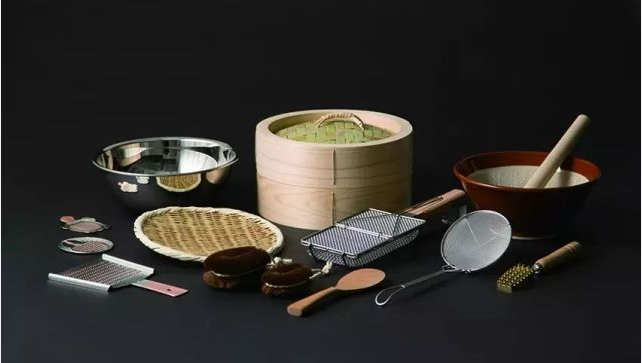

2. Tips for purchasing suitable kitchenware
Choosing the right kitchen utensils is not only essential, but also crucial for equipping the kitchen with the tools needed for cooking, serving, and displaying food. Here are 10 tips to help you choose the right kitchenware set.
2.1 Consider your cooking needs: Firstly, evaluate the types of dishes you often make: if you enjoy stir frying, you may need a high-temperature tolerant wok; If you prefer baking, high-quality baking pans and mixers are indispensable. Secondly, consider the kitchen space and storage conditions, and choose kitchenware that is suitable for the size of your kitchen to avoid crowding and inconvenience. Finally, choose durable kitchenware based on your cooking frequency to meet your daily needs.
2.2 Materials are important: Kitchen utensil sets can be made of various materials such as stainless steel, non stick coatings, ceramics, or glass. High quality raw materials can significantly enhance the flavor and nutritional value of dishes. For example, fresh vegetables, high-quality meat, and seasonings can bring better taste and health benefits. In addition, different ingredients have different requirements for cooking methods, and selecting suitable ingredients can optimize the cooking effect.
2.3 Quality is more important than quantity: Place quality above the number of items in the kit. Having a smaller set of high-quality items is better than having a larger set of mediocre items.
2.4 Suitable stove for you: Ensure that the cookware is compatible with your stove. If you have an induction cooker, please check its electromagnetic compatibility. Firstly, if you are using an induction cooker or induction cooker, choosing a cookware with a flat bottom and strong magnetic conductivity, such as stainless steel or iron cookware, will ensure even heat transfer. For gas stoves, you can use pots made of various materials, but you should choose pots with thick and stable bottoms to avoid uneven heating or tilting at high temperatures.
Secondly, considering the size and type of stove, it is very important to choose kitchen utensils with appropriate diameter and shape. Ensure that the heating area of the cookware matches the stove to fully utilize heat energy and avoid waste. For example, a pot that is too small may cause heat concentration under high heat, while a pot that is too large may not be able to heat effectively.
Finally, check the material and heat resistance of the kitchen utensils to ensure they are suitable for your commonly used cooking methods. For example, cast iron pots are suitable for high-temperature slow stewing, while non stick pots are more suitable for low-temperature cooking and easy to clean.
2.5 Lid and handle: Verify if the pot and flat bottomed pot in the kit are equipped with suitable lids, and the handle should be ergonomic, comfortable to handle, and easy to grip. Heat resistant handle materials, such as stainless steel or thermal insulation plastic, can prevent finger burns at high temperatures. At the same time, choosing kitchen utensils with stable handle design can reduce the instability during mixing or moving, and improve safety during use.
2.6 Uniform heat distribution: Find cookware with good heat distribution performance. Uniform heat distribution can prevent hot spots and ensure consistent cooking results.
2.7 Weight considerations: Consider the weight of the cookware. Heavy items such as cast iron have excellent insulation performance, but may not be practical for some users.
2.8 Multifunctionality: Multi functional kitchen utensils can meet various cooking needs, reducing the need for single purpose products. For example, a kitchen utensil that integrates a frying pan, boiling pot, and steaming pot allows you to complete multiple cooking tasks with the same pot. There is also a food processor that can not only cut and stir, but also perform operations such as grinding meat and whipping cream. This versatile feature can make you more efficient in preparing different dishes, saving time and effort. This design is particularly suitable for small kitchens or households that want to reduce the number of kitchen utensils.
2.9 Maintenance requirements: Evaluate the maintenance requirements for kitchen utensils. Some materials are easier to clean and maintain than others. Choose something that suits your lifestyle.
2.10 Design driven: Well designed kitchen utensils can reduce fatigue during cooking and improve operational accuracy. If your storage space is limited, space saving cookware with stackable or nested designs can be a real asset.
3. Factors to Consider When Choosing Kitchenware Products Online
3.1 Material quality
Prioritize kitchen utensils made of high-quality food grade materials that are durable, heat-resistant, and easy to clean. Check to ensure safety and non-toxic certification.
3.1.1 Functionality and multifunctionality
Choose items with multiple uses to maximize cooking efficiency. Search for cookware and utensils that can handle various cooking techniques and recipes.
3.1.2 User friendly design
Choose kitchenware products that are ergonomically designed to provide comfort and safety during food preparation and cooking. Consider the weight, grip, and handle of the product to achieve optimal control.
3.1.3 Maintenance and cleaning
Choose kitchen utensils that are dishwasher safe or easy to hand wash and clean. Avoid using products that require complex maintenance procedures or specialized cleaning procedures.
3.1.4 Intelligent online kitchen supplies shopping tips
Read reviews and ratings, and before making a purchase, read customer reviews and product ratings to measure the performance and durability of the kitchenware you are interested in.
3.1.5 Compare prices and brands
Compare prices and brands to find the best deal without compromising quality. Looking for well-known kitchenware brands known for their reliability and longevity.
3.1.6 Understand the return policy
Familiarize yourself with the return and exchange policy of the online store you purchased. Ensure that if the item does not meet your expectations, you have the option to return or exchange it.
3.2 View product specifications
Pay attention to product specifications, including size, capacity, and materials used. Ensure that the kitchenware you choose meets your cooking needs and kitchen space.
3.3 Fashionable and innovative kitchen utensil selection
Air fryer:
For example, choosing a multifunctional air fryer can allow you to enjoy fried foods with less oil and promote healthier cooking choices. Search for models with multiple cooking functions to increase versatility.
Smart kitchen thermometer:
Using an intelligent thermometer can accurately control the temperature during cooking to achieve perfect cooking results.
Silicone storage and organization solution
Provide flexibility and durability for storing leftovers and prepared food ingredients. Consider foldable and stackable options to maximize storage space utilization.
3.4 Maintain and extend the service life of kitchen utensils
3.4.1 Follow the manufacturer’s instructions for use, maintenance, and cleaning to ensure the longevity of kitchenware.
3.4.2 Store your kitchen utensils in a clean and orderly manner to prevent scratches, dents, and other damage. Utilize racks, partitions, and cabinets to keep your items in optimal condition.
3.4.3 Regularly check your kitchen utensils for any signs of wear and promptly resolve any issues. For example, sharpening the knife regularly to maintain its sharpness.
3.4.4 Handle your kitchen utensils carefully and avoid exposing them to extreme heat or sharp objects that may cause damage, in order to extend their lifespan.
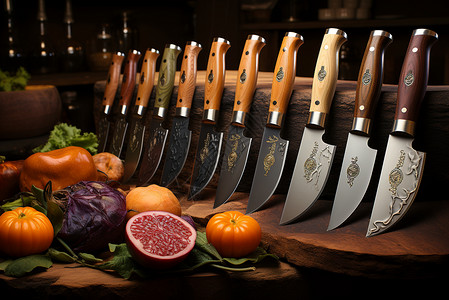

4. Suggestions for selecting different cutting tools
It is very important to understand the purpose and characteristics of different cutting tools when choosing them. This not only helps you choose the most suitable cutting tools for your needs, but also improves cooking efficiency and safety. Here are some common tool selection suggestions, hoping to be helpful to you:
4.1 Chef’s Knife
Features: Chef knives are usually about 20-25 centimeters long, with a wide and thick blade, suitable for various cutting tasks such as chopping vegetables, meat, and bones.
Purchase suggestion:
Blade material: High carbon stainless steel, titanium alloy, or ceramic blades are all good choices. High carbon stainless steel cutting tools have strong wear resistance, but maintenance is necessary; Ceramic knives are lightweight and sharp, but not suitable for handling hard objects.
Handle material: Choose a handle material that matches your grip habits, such as wood, plastic, or synthetic materials.
Balance: The balance between the blade and handle has a significant impact on the user experience, and you can personally try to feel the balance when purchasing.
4.2 Slicing Knife
Features: The slicing knife is relatively long, usually between 20-30 centimeters, with a thin blade, suitable for cutting meat, fish, and large pieces of food.
Purchase suggestion:
Blade shape: Choose a slicing knife with a slender and sharp blade, which makes it easier to obtain uniform slicing.
Blade Material: High quality stainless steel material ensures long-lasting sharpness of the slicing blade and is easy to maintain.
4.3 Cleaver bone chopper
Characteristics: The bone chopping knife has a wide and thick blade, usually used to cut hard objects such as bones and hard food ingredients.
Purchase suggestion:
Blade weight: A heavier blade is more suitable for chopping bones, but make sure you can easily control it to avoid unnecessary fatigue.
Blade thickness: Choose a bone chopping knife with a thicker blade to more effectively handle hard objects.
4.4 Boning Knife
Features: The bone removal knife has a narrow and flexible blade, suitable for removing bones and fascia from meat.
Purchase suggestion:
Blade flexibility: A bone removal knife requires a certain degree of flexibility to better fit the meat during the bone removal process.
Comfort of the handle: As the bone removal process takes a long time, choosing a comfortable and non slip handle is very important.
4.5 Paring Knife
Features: Peeling knives usually have shorter blades, suitable for fine cutting and trimming, such as peeling, removing seeds, and trimming ingredients.
Purchase suggestion:
Blade length: Choose a peeler with a shorter and more flexible blade for precise operation.
Knife handle design: The knife handle should meet the comfort level of the hand and avoid discomfort during operation.
4.6 Fish Knife
Features: The fish knife has a long and thin blade, usually with slight bends, used for handling fish and cutting thin slices.
Purchase suggestion:
Blade curvature: Choose a fish knife with a slightly curved blade to better fit the fish body and obtain more uniform slices.
Blade material: High carbon stainless steel material usually provides better sharpness and durability.
4.7 Utility Knife
Features: The multifunctional knife is a versatile cutting tool suitable for various cutting tasks, with a blade between a chef’s knife and a peeler’s knife.
Purchase suggestion:
Blade size: Choose a medium length blade to handle various daily cutting tasks.
Handle comfort: Ensure that the handle is comfortable and easy to grip, making it convenient for long-term use.
4.8 Cheese Knife
Features: Cheese knives have specially designed blades, usually with holes or serrations, used to cut different types of cheese.
Purchase suggestion:
Blade design: Choose a cheese knife with holes or
serrations to better handle cheese of different softness and hardness.
Other considerations when making a purchase:
Budget: There are significant differences in tool prices, so choose cost-effective tools based on personal budget.
Brand and manufacturing process: Choose reputable brands and tools made with excellent craftsmanship to ensure their durability and performance.
Tool maintenance: Understand the maintenance and upkeep methods of tools to ensure their long service life.
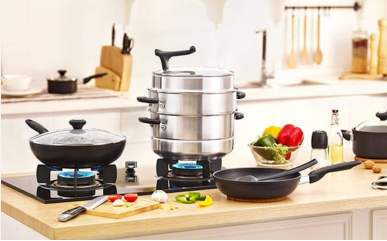

5. Compare the characteristics of various cookware and choose the appropriate frying pan and frying pan
Choosing the right cookware in the kitchen has a crucial impact on cooking effectiveness. Frying pans and frying pans are two common and multifunctional cookware, but they each have different characteristics and applicable scenarios. The following is a comparison of various cookware to help you choose the most suitable wok and frying pan.
5.1 Frying pan
characteristic:
Shape: Fry pans typically have a circular or curved bottom, higher edges, and can hold more ingredients and oil.
Material Science:
Carbon steel: a traditional frying pan material with good thermal conductivity and high temperature resistance, but requires regular maintenance to prevent rusting.
Stainless steel: commonly found in modern frying pans, it is corrosion-resistant and easy to clean, but has poor thermal conductivity, usually with an aluminum or copper bottom layer to enhance thermal conductivity.
Cast iron: uniform heat conduction, good insulation performance, but heavy and requires additional maintenance.
Ceramic coating: It has non stick properties, is easy to clean, but may not be as durable as other materials.
Usage: The frying pan is suitable for various cooking methods such as stir frying, soup making, and deep frying, especially for fast and hot stir frying, stir frying, and Chinese cooking.
Advantages: Strong high-temperature heating ability, able to quickly stir fry ingredients, high pot wall can prevent oil splashing out.
Purchase suggestion:
Bottom: Choose a frying pan with a flat bottom and good contact with the stove to ensure even heating.
Handle: Choose a heat-resistant and comfortable grip handle for easy stir frying operation.
Pot body: Considering the thickness and weight of the pot body, choose a frying pan that suits your own usage habits.
5.2 Frying Pan
characteristic:
Shape: Frying pans are usually designed with a flat bottom and lower edges, making it easy to flip and flip ingredients.
Material Science:
Cast iron: a classic frying pan material with good insulation performance and even heat distribution, suitable for long-term frying, but requires regular maintenance.
Stainless steel: commonly used in high-temperature frying, corrosion-resistant and not easily deformed, but generally requires heating oil to prevent sticking to the pot.
Aluminum alloy: lightweight and has good thermal conductivity, usually with a non stick coating, suitable for daily frying.
Non stick coating: reduces the sticking of ingredients to the pot, makes cleaning convenient, but not suitable for high-temperature cooking.
Usage: The frying pan is suitable for frying, stewing, baking, etc., especially for making pancakes, fried eggs, and fried meat.
Advantages: Easy to control the flipping and turning of ingredients, low pot wall for convenient operation.
Purchase suggestion:
Bottom: Choose a frying pan with a flat bottom and even thermal conductivity to ensure that the ingredients are heated evenly.
Handle: Choose a heat-resistant and comfortable grip handle for easy operation.
Coating: If choosing non stick coating cookware, ensure high coating quality and durability.
5.3 Comparison of different cookware
Frying pan vs. frying pan:
Usage: A frying pan is more suitable for Chinese style fast and hot stir frying, stir frying, and soup making, while a frying pan is suitable for frying, stewing, and various flat bottomed cooking.
Shape: The round bottom and high edges of the frying pan are suitable for stir frying and flipping large amounts of ingredients over high heat, while the flat bottom and low edges of the frying pan are more suitable for precise frying and flipping.
Materials: There are various materials for frying pans, such as carbon steel, stainless steel, cast iron, etc., each with its own characteristics; There are also various materials for frying pans, such as cast iron, stainless steel, aluminum alloy, etc., but usually more emphasis is placed on the flat bottom and easy cleaning characteristics.
5.4 Suggestions for selection
If you mainly engage in Chinese stir frying, stir frying, and stewing, it is recommended to choose a wok. When making a purchase, consider the flatness of the pot bottom, the thickness of the pot body, and the durability of the material to ensure that it is suitable for your own usage habits.
If you mainly engage in frying, stewing, and simple daily cooking, it is recommended to choose a frying pan. When making a purchase, consider the thermal conductivity of the pot bottom, the comfort of the pot handle, and the quality of the coating.
Choosing the right cookware can not only improve cooking efficiency, but also enhance the comfort and efficiency of kitchen work. I hope these comparisons and suggestions can help you find the most suitable wok and frying pan, making your cooking more effortless.
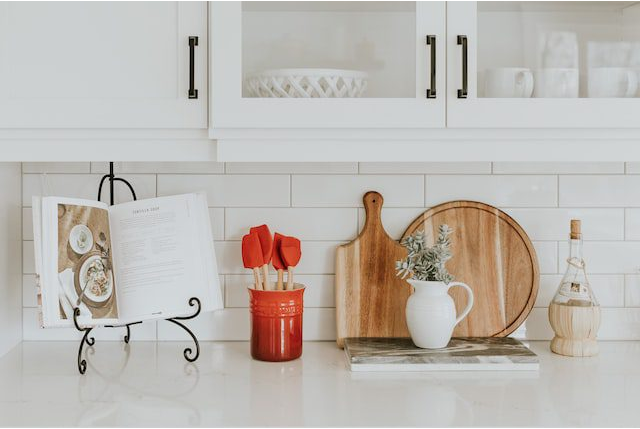

6. Understand the different materials and their advantages and disadvantages of cutting boards, and master the correct maintenance methods.
Understanding the different materials and their advantages and disadvantages of cutting boards, as well as mastering the correct maintenance methods, can greatly improve the efficiency and hygiene of kitchen work. The following is a comparison of common cutting board materials and maintenance methods.
6.1 Comparison of cutting board materials
Advantages of wooden cutting boards:
Knife protection: Wooden cutting boards are more blade friendly and help keep the knives sharp.
Natural antibacterial properties: Some woods such as maple and walnut have natural antibacterial properties.
Durability: High quality wooden cutting boards are usually very durable and have a long service life.
Disadvantages of wooden cutting boards:
Complex maintenance: Regular application of mineral oil is required to prevent cracking.
Not suitable for humid environments: easily absorbs liquids, may cause mold or deformation.
High cleaning requirements: manual cleaning and drying are required to avoid prolonged soaking.
6.2 Plastic cutting board
advantage:
Easy to clean: Can be placed in a dishwasher for easy hygiene.
Strong water resistance: non absorbent, durable and not easily deformed.
Color differentiation: There are usually multiple colors available for easy differentiation and processing of different ingredients.
Disadvantages:
Tool damage: Hard plastic may cause wear and tear on the tool, making the blade easily dull.
Scratch problem: The surface is prone to leaving scratches, which may become a breeding ground for bacteria.
6.3 Bamboo cutting board
advantage:
Environmental Protection: Bamboo grows rapidly and is a renewable resource.
Durability: harder and more durable than ordinary wood.
Easy to clean: relatively easy to clean and maintain.
Disadvantages:
Tool wear: Bamboo is relatively hard, which may cause faster tool wear.
Maintenance requirement: Regular maintenance is needed to maintain its durability and prevent cracking.
6.4 Glass cutting board
advantage:
Hygiene: Smooth surface, not easy to breed bacteria.
Easy to clean: dishwasher washable, heat-resistant.
Disadvantages:
Tool damage: Hard glass can quickly dull the blade.
Noise problem: There is a lot of noise during cutting, which may damage the surface of the cutting tool and cutting board.
6.5 Correct maintenance methods
Wooden cutting board:
Cleaning: After each use, clean with warm water and a small amount of detergent. Avoid soaking in water and thoroughly dry after use.
Maintenance: Regularly apply mineral oil to prevent cracking and maintain the moisture of the wood.
Sterilization: You can use white vinegar or salt to wipe the surface to reduce bacterial growth.
Plastic cutting board:
Cleaning: Clean immediately after use and can be placed in the dishwasher for disinfection. For stubborn stains, bleach diluent can be used for cleaning.
Replacement: When there are a large number of scratches or cracks on the surface of the cutting board, it should be replaced in a timely manner to prevent bacterial growth.
Bamboo cutting board:
Cleaning: Similar to wooden cutting boards, clean with warm water and detergent to avoid prolonged soaking.
Maintenance: Regularly apply edible oil (such as mineral oil) to maintain the stability and luster of bamboo.
Sterilization: Lemon and salt can be used to wipe to reduce bacterial growth.
Glass cutting board:
Cleaning: It can be washed in a dishwasher or manually with warm water and detergent.
Maintenance: Regularly check for cracks or damage, and replace them promptly if there is any damage.
Tool protection: Use tool pads or soft tools as much as possible to reduce damage to the tools.
Choosing the right cutting board and proper maintenance methods can not only prolong the service life of the cutting board, but also maintain the hygiene of the kitchen environment. I hope this information can help you make wise choices and effectively maintain your chopping board.
7. The selection and usage techniques of measuring cups ensure the accuracy of cooking.
Measuring cup is an indispensable tool in the kitchen, which can help you accurately measure liquids and dry ingredients, ensuring the accuracy of cooking and baking. The following are tips for selecting and using measuring cups to help you choose the right one and improve cooking effectiveness.
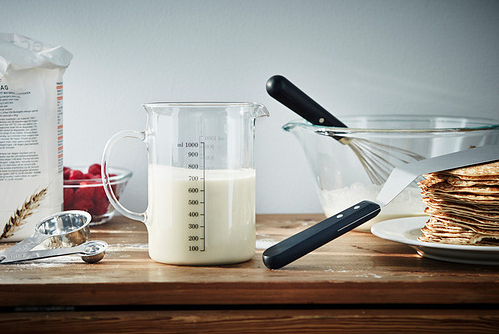

7.1 Tips for choosing measuring cups
7.1.1 Material selection
Glass measuring cup:
Advantages: Heat resistant, easy to clean, transparent, convenient to check liquid volume.
Disadvantages: Relatively heavy, fragile, not suitable for frequent collisions or falls.
Plastic measuring cup:
Advantages: Lightweight, durable, and cost-effective. Usually there are designs that are difficult to break.
Disadvantage: It may absorb food odors and pigments, and is not as transparent as a glass measuring cup.
Stainless steel measuring cup:
Advantages: Durable, sturdy, and will not break. Suitable for handling high temperature or frozen ingredients.
Disadvantages: Opaque, difficult to directly view liquid volume.
7.1.2 Capacity and Scale
Capacity:
Common capacities: The capacity of measuring cups is usually 1 cup, 2 cups, 4 cups, 8 cups, etc. Choose the quantity that suits your needs.
Multi functional: Some measuring cups are designed with multiple capacity indicators, which can simultaneously measure different amounts of liquid or dry materials to increase flexibility in use.
Scale:
Clear scale: Ensure that the scale is clear and the markings are accurate, making it easy to read. The scale should be evenly distributed and not easily worn.
Unit marking: Select measuring cups labeled with commonly used units (such as milliliters, cups, ounces) for international use.
7.1.3 Design and functionality
Handle: Choose a measuring cup with a comfortable and heat-resistant handle for easy operation when pouring liquids.
Pouring design: Some measuring cups are designed with streamlined pouring or anti drip design to reduce overflow and dripping when pouring liquid.
7.2 Usage skills
7.2.1 Accurate measurement
Liquid:
Head up measurement: Place the measuring cup on a smooth surface, with the eyes parallel to the liquid surface, to ensure accurate reading.
Adjust the level: Ensure that the measuring cup remains level to avoid excess or insufficient liquid.
Dry ingredients:
Use a scraper: When measuring dry materials such as flour, sugar, etc., use a scraper or blade back to scrape off excess material to ensure accurate measurement.
Loose and tight: For loose dry materials (such as flour), gently place them into a measuring cup with a spoon, and then
Scrape flat with a scraper; For tightly pressed dry ingredients (such as brown sugar), use a spoon to compact them into a measuring cup.
7.2.2 Avoid common mistakes
Avoid using old measuring cups: Ensure that the scale of the measuring cup is not worn or blurred, so as not to affect the measurement accuracy.
Avoiding excess or deficiency: Accurate measurement is crucial, especially in baking. Avoid overfilling or underfilling the material.
7.2.3 Cleaning and maintenance
Glass measuring cup: can be washed in a dishwasher, use warm water and detergent when hand washing. Avoid cleaning with a hard brush to avoid scratching the scale.
Plastic measuring cup: When hand washing, use warm water and detergent to avoid using excessively hot water to prevent deformation. Regularly check for discoloration or wear.
Stainless steel measuring cup: can be cleaned with warm water and detergent, avoid using hard objects such as wire brushes to clean, so as not to scratch the surface.
7.3 Practical tips
Prepare multiple measuring cups: Prepare measuring cups of different capacities in the kitchen for more flexible measurement, especially when multiple ingredients need to be processed simultaneously.
Verification accuracy * *: Regularly verify whether the scale of the measuring cup is accurate to ensure the accuracy of the measurement. You can use a standard amount of liquid to check if it meets expectations.
Choosing the appropriate measuring cup and mastering the correct usage techniques can ensure optimal precision during cooking and baking, resulting in more delicious dishes. I hope these suggestions can help you improve the efficiency and accuracy of kitchen operations.
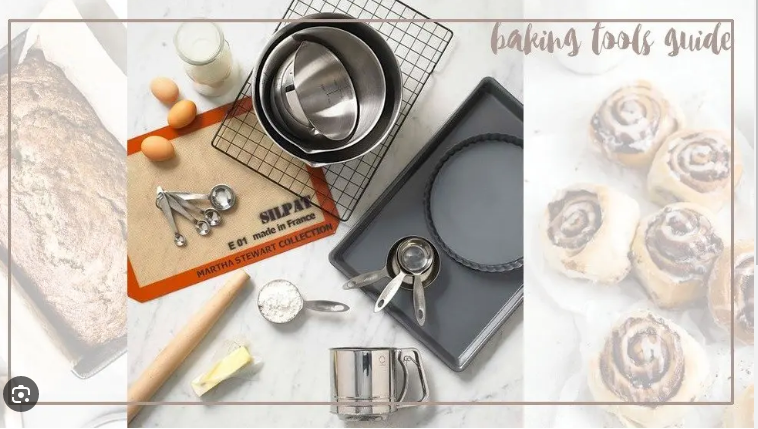

8. Recommend essential baking tools for baking enthusiasts to enhance the baking effect.
For baking enthusiasts, having the right baking tools is the key to ensuring successful baking. Here are some essential baking tool recommendations that can help you improve baking results and make your baking process smoother and more enjoyable.
8.1 Baking Tool List
8.1.1 Oven
Recommendation: Choose an oven with precise temperature control that can evenly heat and maintain a stable temperature. A convection oven with a fan can help distribute heat evenly and avoid uneven baking.
Function: Check if there are preset functions, such as temperature control, timer, oven light, etc., to facilitate monitoring of baking progress.
8.1.2 Baking mold
Circular cake mold: suitable for making cakes, mousse, etc.
Square mold: suitable for making square cakes, brownies, etc.
Muffin mold: suitable for making pancakes, cupcakes, etc.
Cookie mold: Various shapes of cookie molds suitable for making decorative cookies.
Material: Choose non stick coated aluminum or silicone molds for easy demolding and cleaning.
8.1.3 Egg beater
Manual egg beater: suitable for small amounts of whipped egg whites or cream, easy to operate.
Electric egg beater: suitable for quickly whisking large quantities of ingredients, usually with multiple speed settings for easy adjustment of mixing intensity.
Vertical mixer: For large quantities of dough, cream, or egg whites, the vertical mixer is powerful and time-saving.
8.1.4 Measuring tools
Measuring cup: suitable for measuring liquids and dry materials. Choose a graduated measuring cup to ensure precise measurement.
Measuring spoon: Used for measuring small amounts of dry and liquid materials, choose a durable and clearly marked measuring spoon.
Kitchen scale: Accurately measuring the weight of dry and liquid ingredients, especially in baking, accurate recipe quantities are key.
8.1.5 Rolling pin
Recommendation: Choose a smooth wooden, silicone, or stainless steel rolling pin that is easy to clean and durable.
Function: A graduated rolling pin can help you roll out dough of uniform thickness.
8.1.6 Scraper and mixer
Silicone scraper: used for scraping mixtures, turning dough or cream, resistant to high temperatures and not easily scratching containers.
Blender: Suitable for mixing various materials to ensure even mixing.
8.1.7 Baking paper and aluminum foil
Baking paper: anti stick, high temperature resistant, suitable for laying on baking trays to avoid food sticking.
Aluminum foil: used to wrap ingredients or cover baking trays to prevent excessive burning.
8.1.8 Cooling rack
Function: Help the baked food cool quickly, prevent moisture at the bottom, and maintain the baking effect.
8.1.9 Flour sieve
Recommendation: Choose a flour sieve with a fine mesh to sieve flour and other dry materials, ensuring no clumping.
8.2 Usage and maintenance skills
8.2.1 Tool cleaning
Oven: Regularly clean the inner walls of the oven and grill to prevent dirt buildup from affecting the baking effect.
Mold: Clean the mold with warm water and a soft dishwashing sponge, avoiding the use of hard brushes to prevent damage to the non stick coating.
Egg beater and mixer: Clean them promptly after use to prevent food residue from drying out and affecting the effectiveness of use.
Scraper: Clean with warm water and detergent to ensure there are no residual ingredients.
8.2.2 Accurate operation
Follow the recipe: Strictly follow the steps and dosage of the recipe, especially during the baking process, as the accuracy of the recipe directly affects the final result.
Preheat oven: Before placing baked goods, be sure to preheat the oven to the temperature required by the recipe to ensure even heating.
8.2.3 Storage
Tool storage: Store baking tools in a dry, well ventilated place to avoid damp environments that may cause corrosion or deformation of the tools.
Mold storage: Avoid stacking molds together to prevent scratching or deformation.
8.2.3 Tips
Prepare all necessary tools: Prepare all necessary tools before baking to avoid searching for tools during the process, which may affect the baking effect.
Understanding tool functions: Understanding the functions and usage methods of each tool can enable more efficient completion of baking tasks.
Regular inspection: Regularly check the condition of the tools, and if there is any damage or wear, they should be replaced or repaired in a timely manner.
Choosing suitable baking tools and mastering the correct usage and maintenance techniques can help you improve the baking effect and make your baked goods more perfect. I hope these suggestions can help you create delicious baked goods.
9. The functions of food processors and vegetable cutters, choose the most suitable tools
Food processors and vegetable cutters are highly practical tools in the kitchen, each with different functions and purposes. Understanding their characteristics and applicable scenarios can help you choose the most suitable tools to improve kitchen work efficiency. The following is a comparison of the functions and selection suggestions for food processors and vegetable cutters.
9.1 Food Processor
Cutting and chopping: It can be used for cutting, diced, and chopped, suitable for various vegetables, fruits, and nuts.
Stirring and mixing: capable of stirring batter, mixing seasonings, making fruit puree, etc. Equipped with different mixing blades or
Accessories are used to complete these tasks.
Whipping and Grinding: It can whip cream, make sauces, and some high-end models can also be used to grind coffee beans or spices.
Slicing and shredding: There are specialized slicing and shredding trays that can quickly process large quantities of ingredients.
Applicable scenarios
Multi functional requirements: Suitable for kitchens that require multiple processing functions, such as making diverse recipes for bread, pizza, cookies, etc.
Large scale processing: suitable for processing a large amount of ingredients at once, saving time and energy.
Complex operations: If you frequently perform complex food preparation work, food processors can provide more functionality and flexibility.
9.2 Chopper/Slicer
Vegetable cutting and slicing: specifically used for cutting vegetables, meat, etc., usually offering slicing options of different thicknesses.
Sliced and diced: It can be shredded and diced, suitable for making salads, soups, etc.
Fast and efficient: The operation is fast, especially suitable for handling large quantities of ingredients.
Applicable scenarios
Single function requirement: If you mainly need to chop, slice or diced vegetables, a vegetable slicer is more suitable for single and fast cutting tasks.
Limited space: Vegetable cutters are usually more compact than food processors and are suitable for kitchens with limited space.
Simple operation: For users who require simple cutting operations, the vegetable cutter is easy to operate and does not require more complex settings.
9.3 Choose Suggestions
9.3.1 According to functional requirements
Food processor: If you need a multifunctional device that can process various ingredients and perform multiple processing operations (such as slicing, stirring, whipping, etc.), a food processor is a better choice.
Vegetable slicer: If you mainly focus on fast and efficient cutting, slicing, and diced functions, and do not require other complex operations, a vegetable slicer may be more suitable for your needs.
9.3.2 According to the kitchen space
Product processor: Due to its diverse functions and usually large size, it requires a significant amount of storage space.
Vegetable slicer: It is usually more compact and suitable for kitchens with smaller spaces, but its functions are relatively limited.
9.3.3 According to the budget
Food processors: usually priced higher, but with more comprehensive functions, suitable for users with a more affluent budget.
Vegetable slicer: relatively low price, suitable for users with limited budget but requiring efficient cutting.
9.3.4 Maintenance and upkeep
Food processor: Most of the accessories can usually be disassembled and cleaned, and some accessories can be placed in a dishwasher for cleaning.
Maintenance: Regularly check the sharpness of the blades, keep the machine dry, and avoid humid environments affecting the motor.
Vegetable Cutter:
Cleaning: The blades and cutting parts of a vegetable cutter usually need to be manually cleaned to ensure that there are no residual ingredients.
Maintenance: Check if the blade is passivated, and if necessary, replace or sharpen it in a timely manner.
Choosing the right tools can significantly improve kitchen efficiency and make you more adept at handling ingredients. I hope these comparisons and suggestions can help you find the most suitable food processor or vegetable slicer, making your cooking experience more enjoyable.
10. Choosing eco-friendly kitchen utensils is key when creating a green kitchen. Here are a few criteria to help you make wise choices
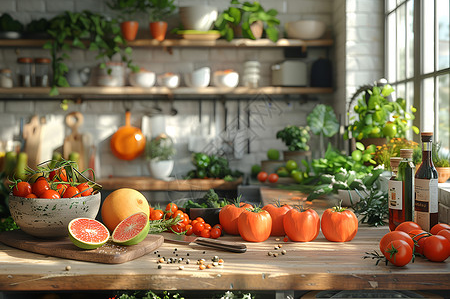

10.1 Material selection: Priority should be given to materials that do not contain harmful chemicals. For example, choose a non stick pan without PTFE (Teflon) or PFOA (Perfluorooctanoic Acid), or use safe materials such as natural wood, bamboo, and stainless steel.
10.2 Durability: Durable kitchenware can reduce resource consumption and waste generation. Choose high-quality products such as cast iron pots and ceramic knives, as these materials typically have a longer lifespan.
10.3 Production process: Understand the production methods of kitchenware and choose brands that use renewable energy and reduce waste in their production processes. For example, looking for products with environmental certification.
10.4 Recyclability: Choose kitchen utensils that are easy to recycle. For example, glass and stainless steel are both easy to recycle, while some plastics may not be suitable.
10.5 Energy saving effect: Some kitchen appliance designs can improve energy efficiency, such as high thermal conductivity pots that can reduce cooking time and save energy.
By delving into these standards, you can make environmentally friendly choices and contribute to a green kitchen.

